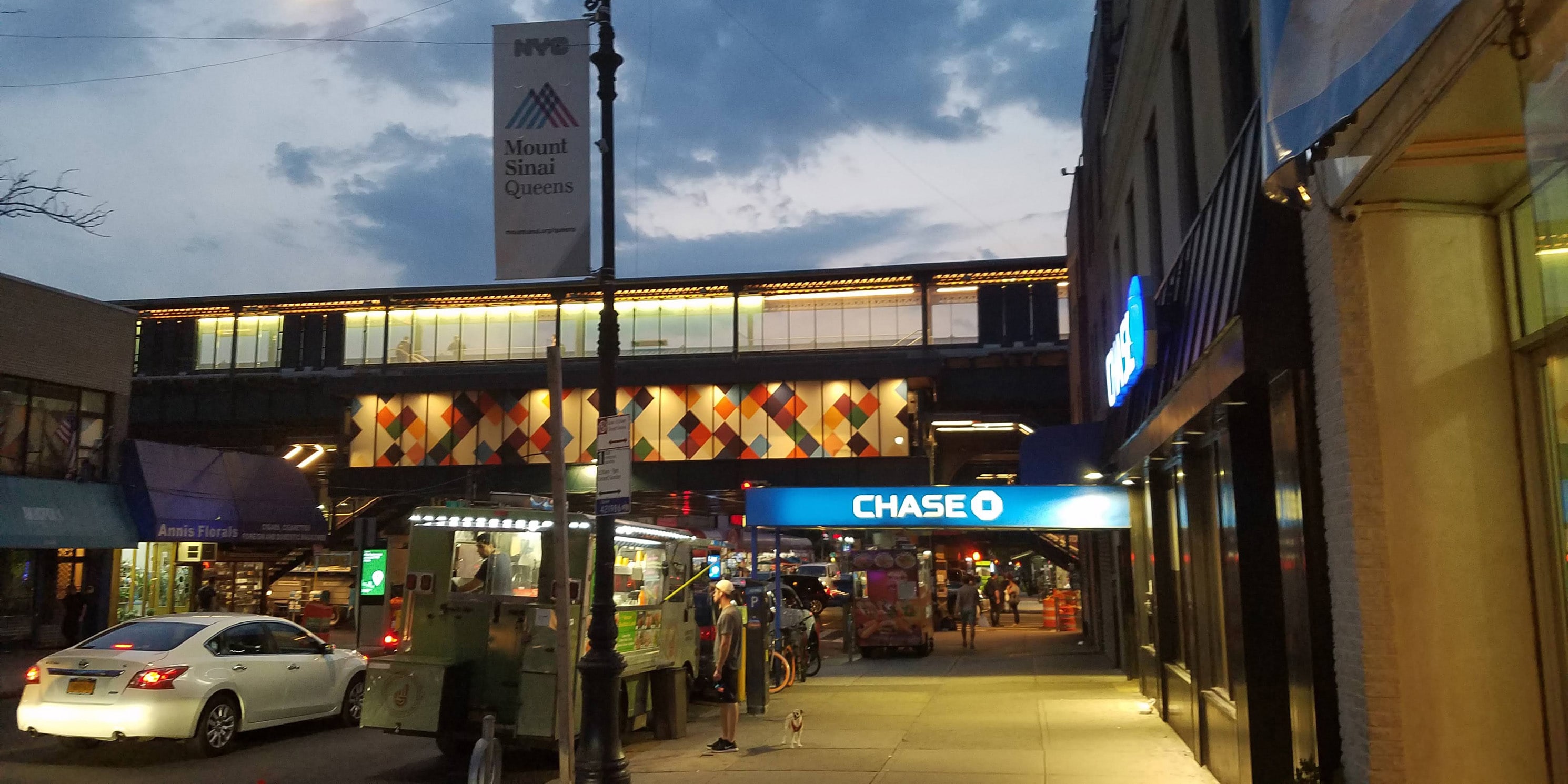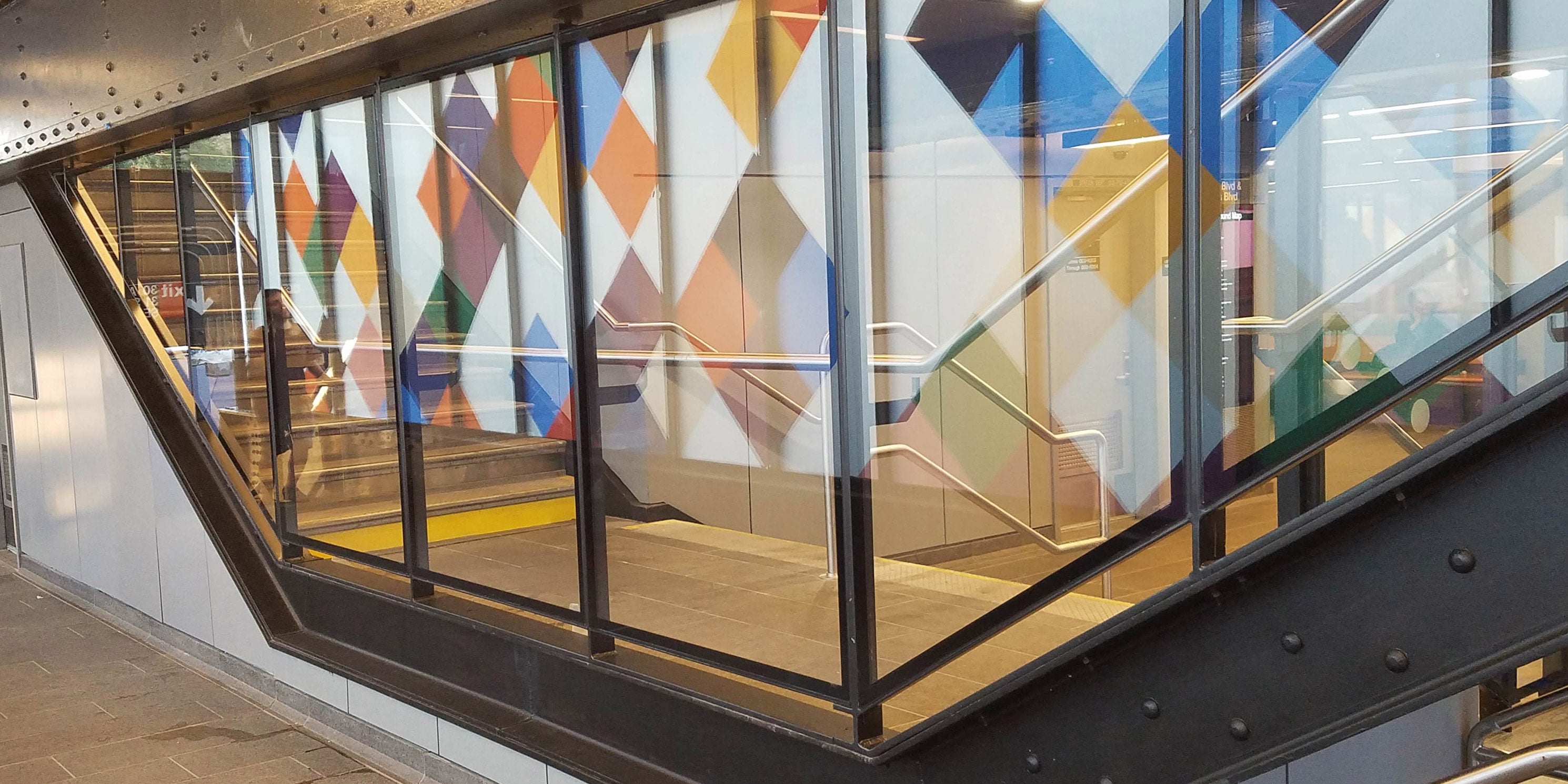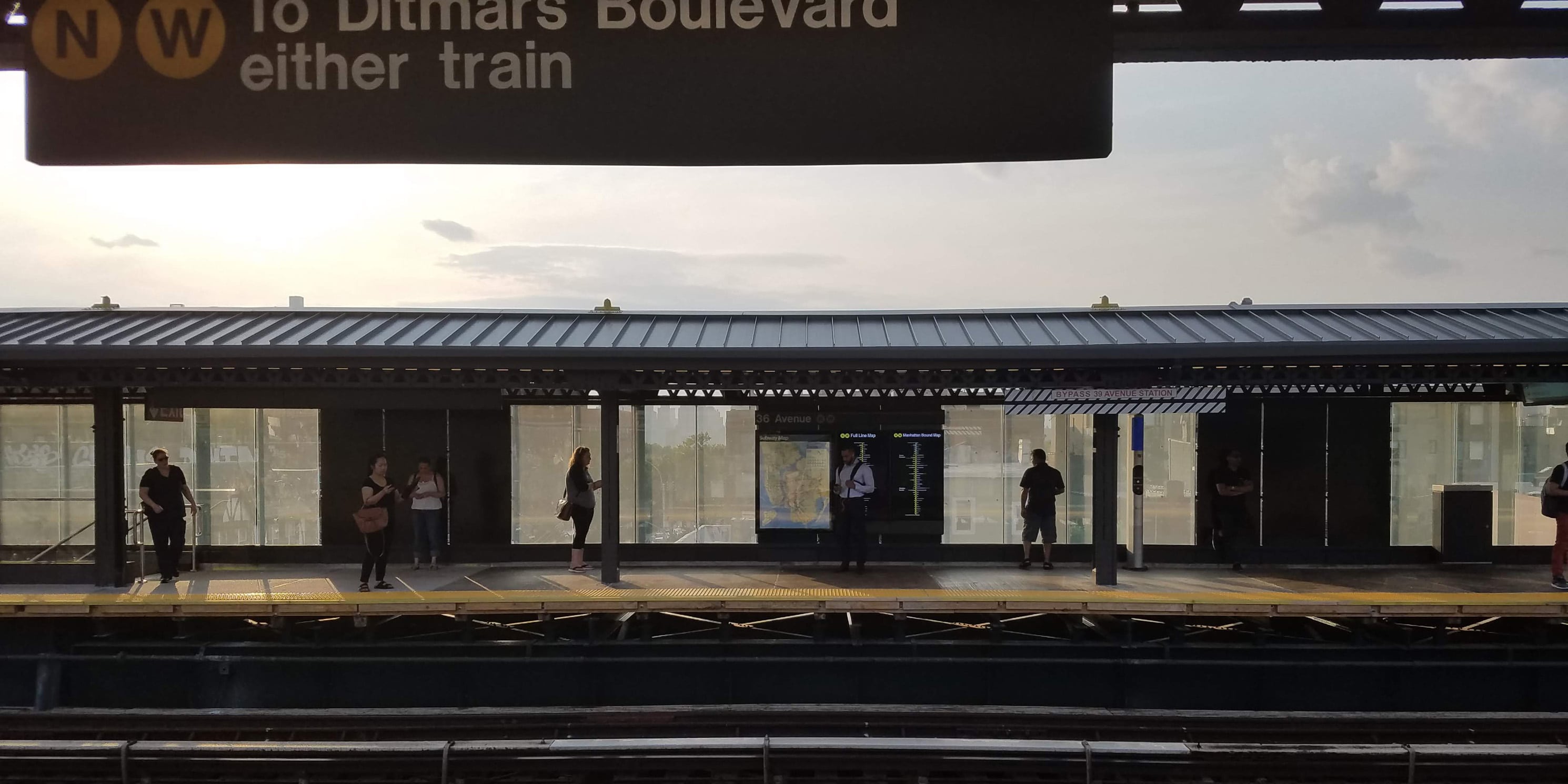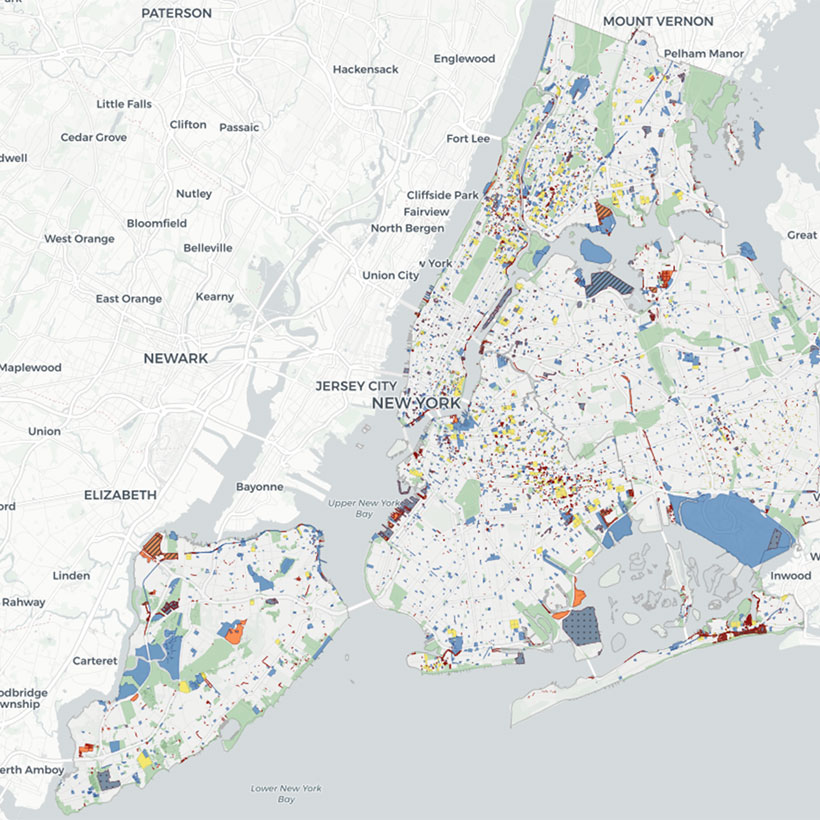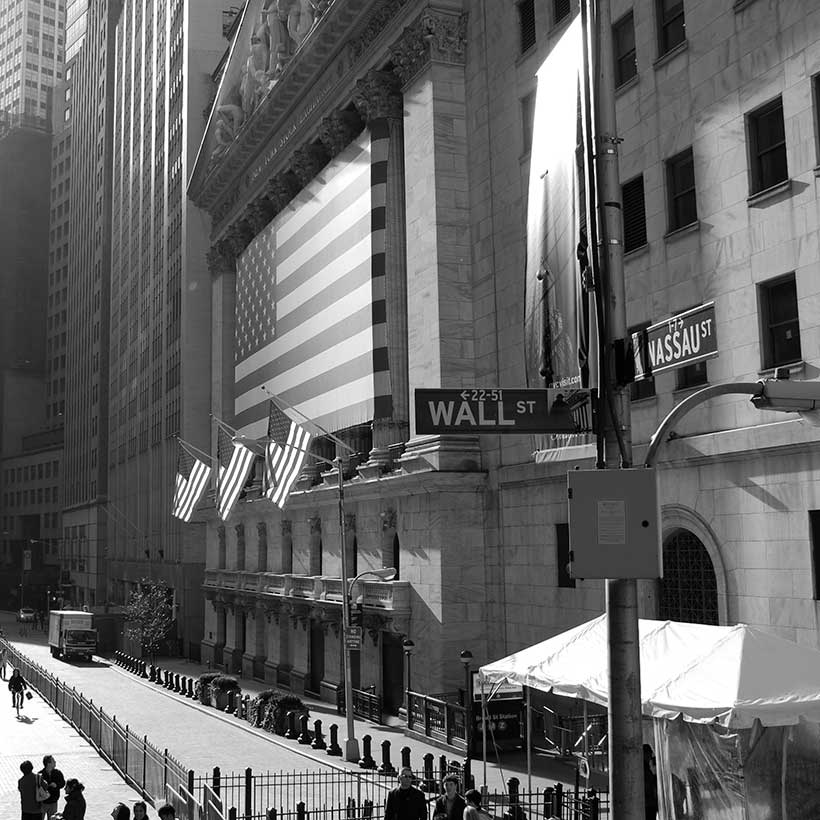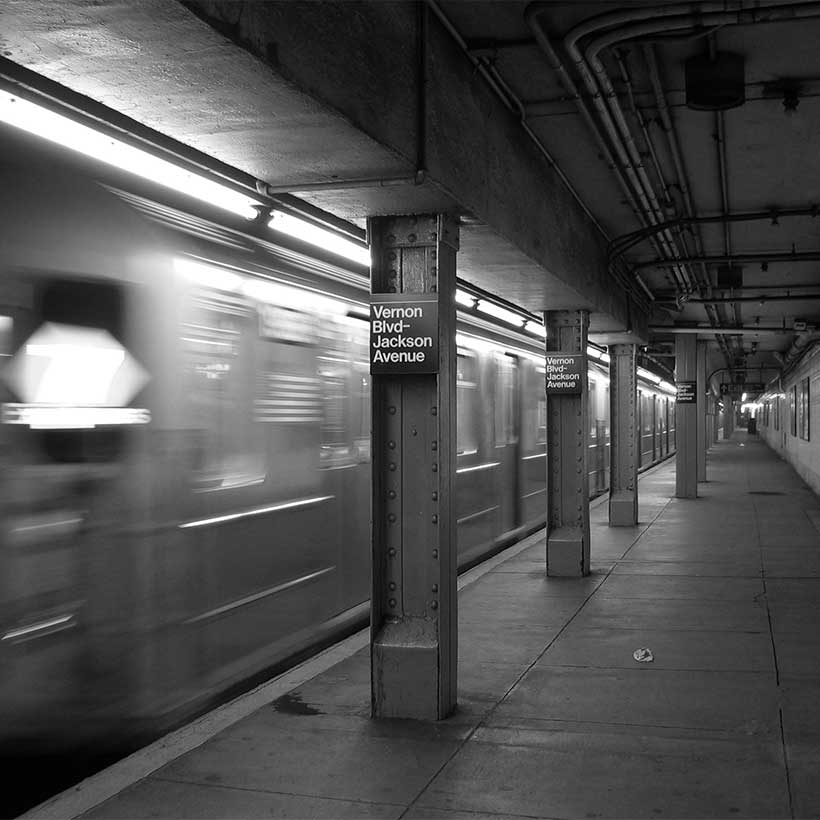President’s Letter, August 2018
Monthly observations and insights from MAS President Elizabeth Goldstein
Last week I went on one of my exploration trips, this time to look at the new N stations in Astoria, Queens. After many months of agonizing complaint and disruption, the 30th and 36th Avenue stops have reopened. I was especially curious because I had watched the R stations in Brooklyn at Prospect Avenue and 53rd Street get rebuilt while I lived in Sunset Park. I should also add that I grew up using elevated stations in the Bronx. I lived through the last significant meltdown of the subway system. So I know my elevated station architecture in a very visceral way.
Anyway, it was a beautiful evening and it wasn’t raining, so I set off with a friend to visit the new stations. And wow… they are different.
The new N stations are light, clean, and extremely well-designed. I arrived from Manhattan on the first car so the first thing I noticed was the amount of light that was reaching the subway platform themselves. It took me a minute or two to realize why. Instead of the usual green rail on the street side, there is now a full length wire fence from platform floor to well above my 5 foot, 11-inch height. So it feels as though you have the neighborhood in a panorama at your feet. And as you walk down the platform towards the stairs, the wire mesh turns to glass. So the cityscape is still visible in both directions.
All along the platform are digital displays with subway maps and information. These are easy to read because they are huge and in multiple languages. In fact, the ones in Astoria are in Greek. How ironic is my amazement?! In such a multi-lingual city, this should have been standard for decades, to ensure our public facilities welcome all our residents and visitors, and not just at subway stations.
The stairs seem to have been rebuilt, so that instead of one long, uneven run to the mezzanine there are landings along the way. And these stairs are well-lit from overhead and in some cases, have under-handrail lighting. All the surface materials are new and look maintainable. Time will tell of course, but the choices seem smart.
On the mezzanine, you are greeted by simple, striking art of fused glass that brightens the space considerably. But my favorite feature of all is that they have carved out a small seating niche within sight of toll booth with a countdown clock. So if it is hot or cold, or really late at night, you can sit in safety and time your climb up to the platform. This is hardly a new idea but it is so well-executed here that it feels like a revelation.
As you move out of the controlled zone to the stairs to the street, you remain visible to the person in the toll booth because you are moving behind a glass wall. And lo and behold, at the bottom of the stairs is a sign informing you of which station it is and what lines run there.
It was no mean feat to figure out how to modernize these very tired old stations to serve the public better. The designs are simple, elegant and most importantly, practical. The visibility across the station is not just an aesthetic advantage, it is a safety one too. My hat’s off to the MTA and the designers, diDomenico + Partners and Grimshaw Architects. They have obviously taken design signals from the iconic Vignelli subway map and brought them into broader station design to a very positive conclusion.
Despite all this praise, I have also heard all the criticism of these stations improvements, called the Enhanced Station Initiative. I certainly understand the need to prioritize repairs of the switching systems above all others. I also understand the concerns that these improvements don’t achieve better accessibility for riders with disabilities. The Enhanced Station Initiative will ultimately renovate 19 stations for a cost of $850 million with $90 million now being set aside for accessibility improvements.
But I have to say that overall, I am extremely impressed with these refurbished stations. Let’s face it… it is really nice to be in a clean, attractive, well-designed space. It feels welcoming. And although I don’t think that anyone is going to be driven to hang out there, I do think making each person’s daily commute a little better is no small or insignificant matter. We all spend a lot of time on subway cars and in stations. It is nice to have that experience be one that is deliberate, and frankly, puts the experience of a rider front and center.
In the end, we have a right to expect that the MTA to deliver our mass transit on time and in a well-designed, efficient, and highly functional station. We must not ignore one for the other. We need to achieve both.
Greek food, anyone?

Elizabeth Goldstein
President
The Municipal Art Society of New York
